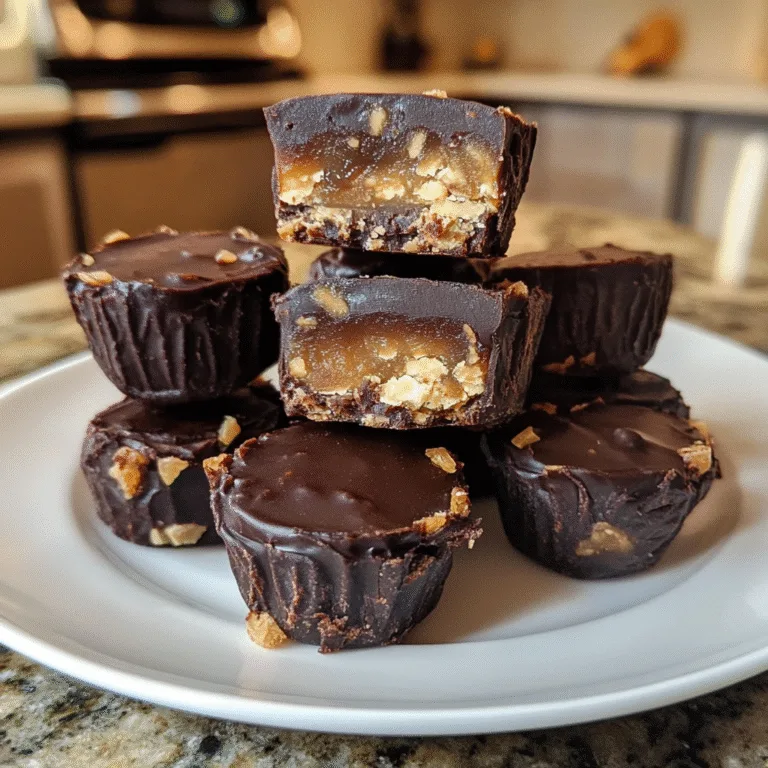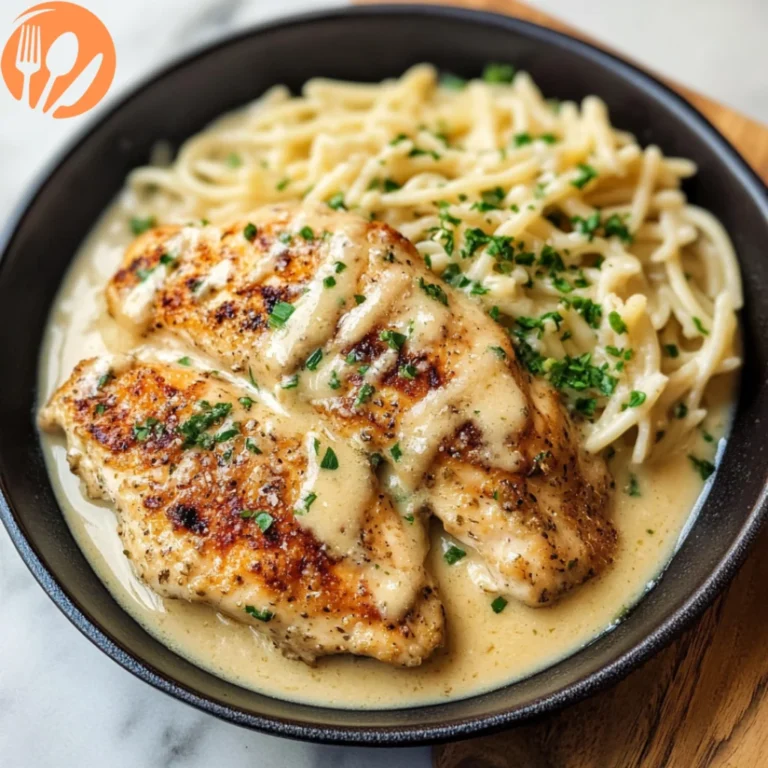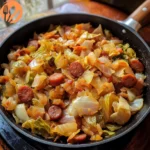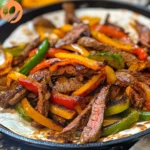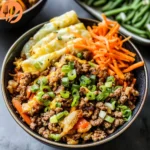Follow Me On Social Media!
Pickled Tomato Cucumber Onion
Introduction
Did you know that pickled vegetables can contain up to 20% more antioxidants than their fresh counterparts due to the fermentation process? This surprising fact makes pickled tomato cucumber onion not just a delicious condiment, but a nutritional powerhouse that's been gracing tables worldwide for centuries. Whether you're looking to preserve your garden harvest, add a tangy kick to your meals, or simply explore the world of fermented foods, this classic pickled tomato cucumber onion recipe delivers on all fronts.
This vibrant medley combines the juicy sweetness of tomatoes, the crisp freshness of cucumbers, and the sharp bite of onions, all transformed through the magic of pickling into a symphony of flavors that dance on your palate. Perfect as a side dish, sandwich topping, or even enjoyed straight from the jar, this pickled vegetable combination has become a staple in kitchens from Eastern Europe to the American South.
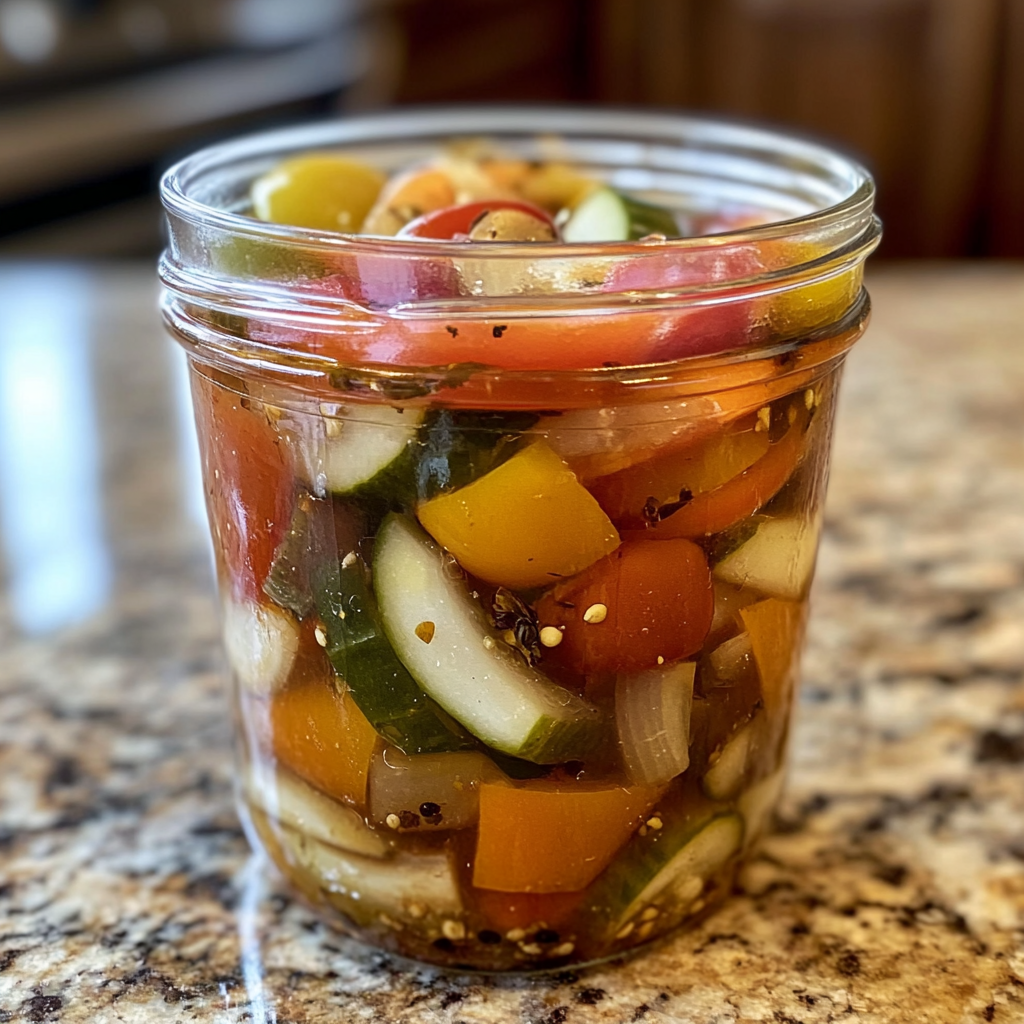
Ingredients List
Creating the perfect pickled tomato cucumber onion medley requires fresh, quality ingredients that will hold up beautifully to the pickling process. Here's what you'll need:
Fresh Vegetables:
- 2 pounds ripe but firm tomatoes (cherry tomatoes work wonderfully, or use Roma for larger pieces)
- 1.5 pounds crisp cucumbers (English or Persian varieties recommended for their thin skins)
- 1 large sweet onion (Vidalia or yellow onion; red onion adds beautiful color variation)
- 3 cloves fresh garlic, thinly sliced (substitute: 1 teaspoon garlic powder)
Pickling Brine:
- 2 cups white vinegar (5% acidity; apple cider vinegar creates a mellower flavor)
- 1 cup filtered water
- 1/4 cup granulated sugar (honey or maple syrup for natural alternatives)
- 2 tablespoons kosher salt (sea salt works equally well)
Aromatic Spices:
- 2 teaspoons whole dill seeds (fresh dill fronds for a garden-fresh taste)
- 1 teaspoon black peppercorns (white pepper for milder heat)
- 1/2 teaspoon red pepper flakes (adjust to taste preference)
- 2 bay leaves (Turkish bay leaves preferred for their subtle flavor)
- 1/2 teaspoon coriander seeds (optional but adds complexity)
Timing
Preparation Time: 20 minutes
Cooking Time: 10 minutes (for brine preparation)
Cooling Time: 30 minutes
Minimum Pickling Time: 2 hours
Total Active Time: 1 hour
Optimal Flavor Development: 24-48 hours
Compared to quick-pickled vegetables that can be ready in 30 minutes, this pickled tomato cucumber onion recipe allows for deeper flavor penetration, making the extra patience worthwhile. The vegetables will be edible after just 2 hours, but the flavors truly marry and intensify after overnight refrigeration.
Step-by-Step Instructions
Step 1: Prepare Your Vegetables
Wash all vegetables thoroughly under cool running water. Cut tomatoes into wedges or halves, depending on size. Slice cucumbers into 1/4-inch rounds or spears for better brine absorption. Cut the onion into thin half-moons, about 1/8-inch thick. The key is maintaining uniform sizes for even pickling and an attractive presentation.
Pro Tip: If using larger tomatoes, remove excess seeds to prevent the brine from becoming too watery.
Step 2: Layer Vegetables in Jars
In clean glass jars (mason jars work perfectly), layer your prepared vegetables attractively. Distribute the sliced garlic and whole spices evenly among the jars. This creates beautiful, Instagram-worthy presentation while ensuring every bite contains a balanced mix of flavors.
Step 3: Create the Pickling Brine
In a medium saucepan, combine vinegar, water, sugar, and salt. Bring the mixture to a rolling boil, stirring until the sugar and salt completely dissolve. The brine should be crystal clear and aromatic. This hot brine method ensures maximum flavor extraction from your spices.
Step 4: Pour and Cool
Carefully pour the hot brine over the vegetables, leaving about 1/2-inch headspace at the top of each jar. The hot liquid will slightly soften the vegetables while maintaining their crunch. Allow the jars to cool to room temperature, approximately 30 minutes.
Step 5: Refrigerate and Wait
Seal the jars tightly and refrigerate immediately. Your pickled tomato cucumber onion mixture will be ready to enjoy in just 2 hours, though flavors continue developing for up to a week.
Nutritional Information
Per 1/4 cup serving of pickled tomato cucumber onion:
- Calories: 25
- Protein: 1g
- Carbohydrates: 6g
- Fat: 0g
- Fiber: 1g
- Sugar: 5g
- Sodium: 380mg
Health Benefits: This pickled vegetable medley provides excellent vitamin C content from tomatoes and cucumbers, supporting immune system function. The fermentation process also introduces beneficial probiotics that support digestive health, while the low calorie count makes it an ideal addition to weight management plans.
Healthier Alternatives for the Recipe
Low-Sodium Version: Reduce salt to 1 tablespoon and add extra herbs like oregano or thyme for flavor complexity without the sodium spike.
Sugar-Free Option: Replace sugar with stevia or monk fruit sweetener (use 1 tablespoon) to create a keto-friendly pickled tomato cucumber onion recipe.
Probiotic-Rich Version: Allow the mixture to ferment at room temperature for 24 hours before refrigerating to encourage beneficial bacteria growth.
Reduced-Acid Alternative: Use a 50/50 ratio of vinegar to water and add extra salt for preservation, creating a milder, less acidic pickle perfect for sensitive stomachs.
Serving Suggestions
This versatile pickled tomato cucumber onion medley shines in countless culinary applications. Serve alongside grilled meats for a refreshing contrast to rich flavors, or pile high on sandwiches and burgers for added crunch and tang. The pickled vegetables make an excellent addition to charcuterie boards, providing acidic balance to creamy cheeses and cured meats.
For beverages, pair with crisp white wines, light beers, or sparkling water with lemon. The acidity complements Mediterranean dishes, Eastern European cuisine, and Southern comfort food equally well. Try incorporating into potato salad, serving with fried chicken, or using as a topping for avocado toast.
Common Mistakes to Avoid
Using Overripe Vegetables: Soft tomatoes or cucumbers will become mushy during pickling. Choose firm, slightly underripe produce for best texture retention.
Insufficient Brine Coverage: Vegetables not fully submerged can develop off-flavors or spoil. Always ensure complete liquid coverage.
Wrong Vinegar Acidity: Using vinegar with less than 5% acidity can result in unsafe preservation. Check labels carefully.
Overcrowding Jars: Packed-too-tightly vegetables won't pickle evenly. Leave space for brine circulation.
Storing Tips
Refrigerated pickled tomato cucumber onion keeps fresh for up to 1 month in properly sealed jars. Always use clean utensils when serving to prevent contamination. The vegetables will gradually soften over time, so consume within the first two weeks for optimal crunch.
Freezing Note: While possible, freezing changes the texture significantly, making vegetables quite soft upon thawing. Stick to refrigeration for best results.
Signs of Spoilage: Watch for cloudy brine (beyond normal settling), off-odors, or visible mold growth. When in doubt, discard the entire batch.
Conclusion
This pickled tomato cucumber onion recipe represents the perfect marriage of simplicity and flavor, transforming humble garden vegetables into a gourmet condiment that elevates any meal. The combination of sweet tomatoes, crisp cucumbers, and sharp onions creates a balanced, addictive flavor profile that keeps you coming back for more.
Ready to transform your kitchen into a pickling paradise? Gather your ingredients and give this tried-and-true recipe a try. Don't forget to share your colorful creations on social media – we'd love to see your unique variations and serving suggestions!
FAQs
Q: How long do pickled tomato cucumber onion vegetables last?
A: When properly stored in the refrigerator, your pickled vegetables will maintain peak quality for 3-4 weeks and remain safe to eat for up to 2 months.
Q: Can I use different types of vinegar for this recipe?
A: Absolutely! Apple cider vinegar creates a mellower flavor, while rice vinegar adds subtle sweetness. Just ensure any vinegar used contains at least 5% acidity for proper preservation.
Q: Why are my pickled vegetables too salty?
A: This usually occurs from using table salt instead of kosher salt, which is more concentrated. Rinse the vegetables briefly before serving, or dilute the brine with a little water and vinegar.
Q: Can I process these pickles for long-term storage?
A: While this recipe is designed for refrigerator storage, you can adapt it for water bath canning by following USDA-approved ratios and processing times for safe shelf storage.

